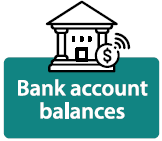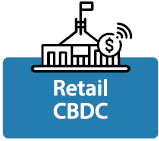RDP 2024-02: Valuing Safety and Privacy in Retail Central Bank Digital Currency Non-technical summary for ‘Valuing Safety and Privacy in Retail Central Bank Digital Currency’
April 2024
What did we set out to do?
Consumers currently have access to two forms of Australian money:
- Cash. This physical form of money is issued by the Australian Government – the RBA issues banknotes and the Royal Australian Mint issues coins. It can be used for in-person transactions but not digital ones. Cash payments occur when banknotes and/or coins are physically passed from one person to another; these payments are almost completely private.
- Bank account balances. This is a digital form of money that is issued by commercial banks. Digital payments can be made in person and online. Information about these transactions is recorded and sometimes used to detect and prevent financial crimes.
Due to the ongoing rise in digital transactions, policymakers in Australia are considering the potential benefits and costs associated with a possible third form of money:
- Retail central bank digital currency (CBDC). This would be the only form of money that is both issued by government (via the RBA) and can be used for digital transactions among consumers and businesses. A retail CBDC is, for the most part, a digital version of cash. It could also include various other features, such as different levels of privacy.
 |
 |
 |
|
|---|---|---|---|
| Issued by government |
|||
| In-person transactions |
|||
| Digital transactions |
|||
But do consumers want a retail CBDC?
Our research investigates this issue, by answering two key questions:
- How much would Australian consumers value access to a digital form of money that is issued by the RBA, rather than a commercial bank?
- How much would consumers value the potential privacy characteristics of a retail CBDC?
To answer these questions, we ran an experiment using the 2022 RBA Consumer Payments Survey (a large, nationally representative survey of payments behaviour in Australia).
What did we learn?
We discovered that Australians on average do not appear to value the fact that a CBDC would be issued by the RBA. This is consistent with Australians having confidence that our commercial banks are well regulated and supervised, and that bank account balances are safe and well protected via the government's deposit guarantee.
The issue of privacy looks to matter more for consumers. We found that consumers do care about the number of institutions that see their transaction data and which institutions those are. Further research should consider what privacy settings could be in-built for a retail CBDC to be compatible with other policy objectives, such as the detection and prevention of financial crime.
What was our key takeaway?
For Australian consumers to value a retail CBDC enough to justify its introduction, it would need to offer more than simply being issued by the RBA. The potential for different privacy settings to what is currently offered by commercial banks is one such value-add of interest to consumers.